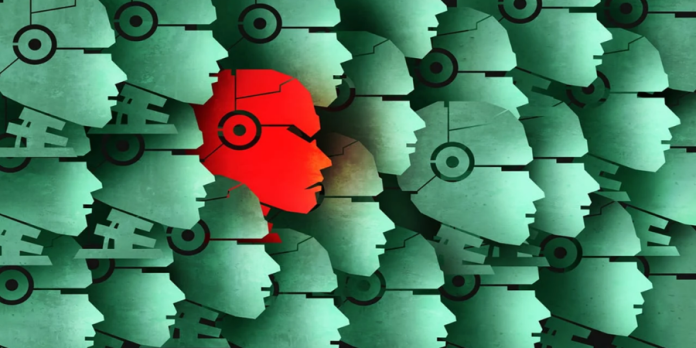AI has provided cybercriminals with an unprecedented arsenal of tools to infiltrate your systems. Fortunately, it’s not too late to prepare your engineering team to confront these new challenges head-on.
Recently, cybersecurity experts have been sounding the alarm about the increasing use of AI to orchestrate sophisticated cyberattacks. AI has lowered the entry barrier for hackers by enhancing social engineering, phishing, and network penetration strategies.
Unfortunately, while malicious actors have quickly embraced AI, the cybersecurity sector has lagged. Despite the influx of new graduates, a staggering 84 per cent of professionals lack substantial AI and ML knowledge. Consequently, the industry is facing a wave of AI-driven attacks it isn’t fully equipped to handle. Even the FBI has warned about the rise of AI-powered cyberattacks.
However, it’s not too late to address this skills gap. Business leaders and CTOs can take proactive steps to upskill their teams and fortify their defenses against AI threats. Let’s explore how cybersecurity leaders can prepare their engineers to handle AI threats and leverage the technology to bolster their operations.
Empowering Engineers with Advanced AI Skills for Enhanced Cybersecurity
It’s not surprising that today’s engineers aren’t yet adept at dealing with AI threats. While AI isn’t new, its rapid evolution over the past two years has outpaced traditional training programs. Engineers who completed their training before this period likely did not encounter AI in their curriculum. Conversely, hackers have quickly adapted, often through DIY methods and collaborative learning.
A recent study indicates that promoting a culture of continuous learning among engineers and software developers can help bridge the AI skills gap. CTOs and business leaders should facilitate opportunities for staff to learn AI skills, ensuring they stay ahead of the curve. This can enhance internal cybersecurity or improve services for clients if the company provides cybersecurity solutions.
While AI tools like chatbots can assist with coding and answering questions, mastering AI’s higher-level capabilities—such as enhancing productivity, safeguarding systems against AI attacks, and integrating AI into existing processes—requires more comprehensive training. Investing in specialized AI training programs is crucial for modern cybersecurity businesses.
Companies can hire AI experts to conduct task-specific courses or enroll their engineers in online classes that certify them in the latest AI skills. These programs range from introductory courses on platforms like Udemy to advanced lessons offered by institutions like Harvard. The choice depends on the company’s goals and resources.
If you have connections with industry experts, start by inviting them to share their knowledge on AI cybersecurity basics with your team. If not, begin with a bottom-up approach: identify online courses covering core concepts, considering your budget and workload. Progress to more rigorous courses as your security team adapts and your priorities evolve. The learning opportunities in this ever-changing field are vast.
Harmonizing AI and Human Oversight: Ensuring Robust Security and Effective System Management
Achieving an effective equilibrium between AI utilization and human oversight is crucial for securing physical security products. While AI excels at identifying and responding to cybersecurity threats, maintaining human control and oversight through well-defined policies and procedures is essential. An overarching AI governance policy, potentially included in the board risk register, should encompass guidelines for safeguarding all critical systems, including security, and establish a clear accountability chain to the highest levels of the organization. At the operational level, personnel responsible for managing and maintaining these systems should receive comprehensive and quantifiable training to evaluate AI decisions and ensure systems operate correctly within the established scope of use.
AI-Driven Red Teaming: Revolutionizing Threat Detection and Defense
Training your workforce is just the beginning. AI is constantly evolving, and hackers continuously refine their techniques. Therefore, ongoing learning is essential.
One effective method is running simulated red teaming attack scenarios with an AI twist. Many organizations have already adopted red teaming to strengthen their cybersecurity. However, as new threats emerge, red teaming must also evolve.
Traditional red teaming involves engineers attacking their systems to identify vulnerabilities and patch them. Now, AI should play the attacker’s role, helping employees understand AI’s tactics and build resilient defenses. The race between defenders and attackers has intensified, with attackers often outpacing engineers by quickly exploiting new technologies, especially AI.
Cybersecurity experts use AI to recreate red teaming activities, simulating how hackers would utilize AI to breach systems. This helps teams anticipate potential threats and discover new defense strategies that traditional methods might miss.
As AI becomes integral to cybersecurity offerings, securing its implementation against breaches is vital. Security teams should adopt offensive tactics like vulnerability discovery to ensure their AI tools have no exposed attack surfaces. This proactive approach prepares companies to protect their AI systems from increasingly sophisticated attacks.
Comprehensive AI Security Assessments for Robust Protection
Whether your team is developing AI features or using third-party tools, it’s crucial to vet the safety of these new technologies. The National Institute of Standards and Technology (NIST) highlights various AI-related cyber risks, including data poisoning, which hackers use to compromise AI systems.
To address these risks, engineers must enhance internal security. Embedding security assessments into the development process of AI features ensures proactive protection and fosters a security-first mindset. Many services offer such assessments, guiding engineers in conducting security tests tailored to their organization’s needs. For instance, OWASP provides a free AI security and privacy guide, a valuable resource for teams to learn innovative security practices.
Fortifying Cyber Defenses: Empowering Engineers to Outsmart Advanced AI-Driven Threats
The cybersecurity workforce faces the daunting task of protecting an increasingly vulnerable digital world. As AI evolves, malicious actors rapidly adopt new technologies to launch innovative attacks. Engineers must move even faster to keep pace with these threats. Industry leaders must ensure their teams are ready to tackle this challenge by upskilling, conducting AI red teaming simulations, and implementing security assessments.
By adopting these strategies, companies can prepare their engineers to manage and mitigate AI threats, securing their operations in an ever-evolving landscape.









